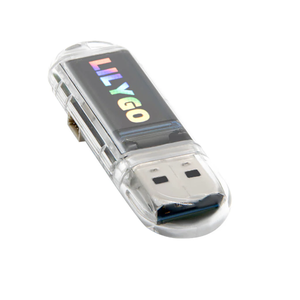
LilyGo T-Dongle S3 is a development board based on the ESP32S3 microcontroller using XTENSA architecture.
This board features a maximum CPU frequency of 240 MHz and 16MB flash memory.
About LilyGo T-Dongle S3
🚀 The LilyGo T-Dongle S3 is a compact development board featuring an ESP32-S3 processor with integrated WiFi and Bluetooth 5. It is designed as a USB-powered dongle for easy plug-and-play development. ⚡
📡 The T-Dongle S3 is equipped with 8MB PSRAM and 16MB Flash, providing ample memory for IoT and embedded applications.
💾 With multiple GPIOs, ADC, PWM, I2C, and SPI support, this board is ideal for prototyping and rapid development.
📋 Technical Specifications
Complete technical specification details for LilyGo T-Dongle S3
🖥️ Display
🛰️ Connectivity
🧠 Microcontroller
✨ Features & Pins
LilyGo T-Dongle S3 Pinout Diagram
Complete pin reference for LilyGo T-Dongle S3
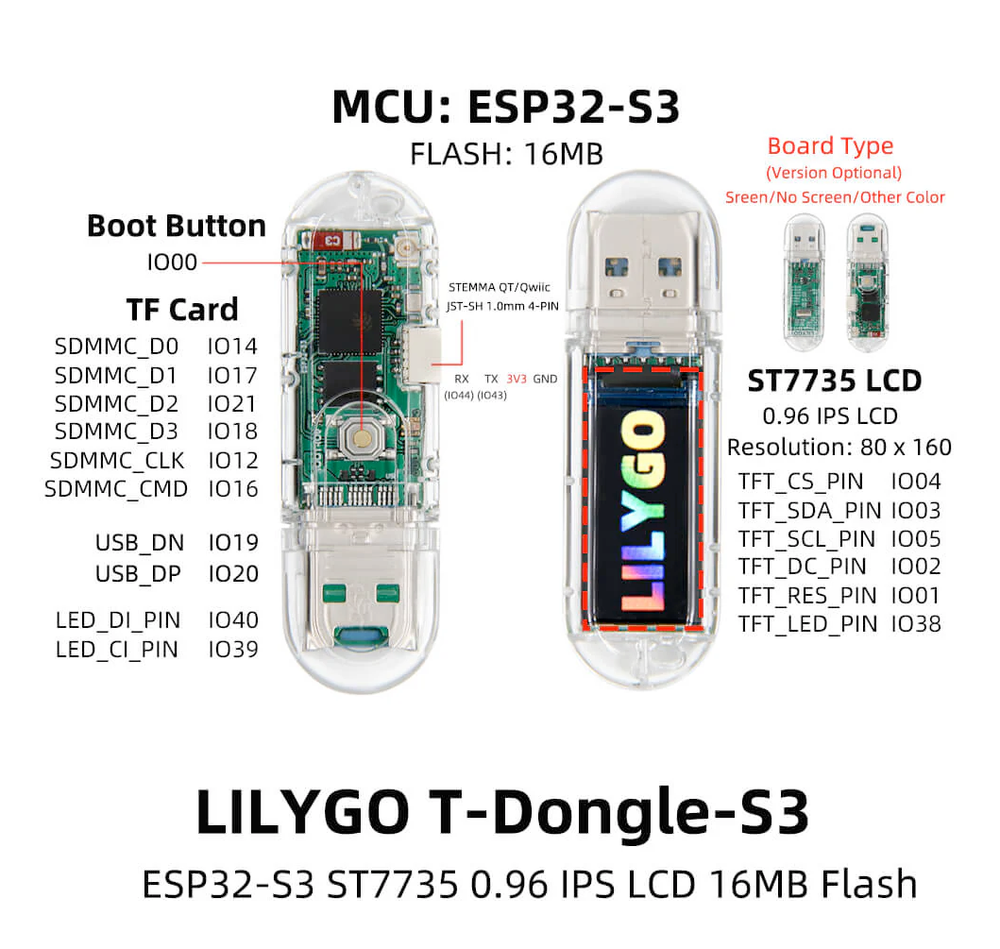
✅ Safe Pins to Use
These pins are safe for general GPIO usage without boot or system conflicts
💡 Why Are These Pins Safe?
⚠️ Pins to Avoid or Use with Caution
Reserved for critical functions. Misuse may cause boot failures, programming issues, or system conflicts.
Boot behavior & flash voltage
Low-level debugging interface
USB Serial/JTAG communication
Memory & PSRAM connections
Debugging & firmware uploads
| PIN | Label | Why Avoid | Type |
|---|---|---|---|
| IO3 | GPIO3 | Sampled at reset to select JTAG interface (USB Serial/JTAG controller vs. external pins). Improper use can disable external JTAG or alter debug interface. | 🛠️ Strapping |
| IO19 | USB_D- | By default connected to the on-chip USB Serial/JTAG controller. Using it as general GPIO without reconfiguring IO MUX will interfere with USB functionality. | 🔌 USB |
Useful Links
Datasheets and resources for LilyGo T-Dongle S3
LilyGo T-Dongle S3 Custom Pin Mapping
Pin configuration and GPIO mapping for LilyGo T-Dongle S3
| Pin | Function | ESP Pin | I/O Type | Description |
|---|---|---|---|---|
| 1 | 3V3 | 3.3V | POWER OUTPUT | 3.3V power output |
| 2 | GND | GND | POWER GROUND | Ground connection |
| 3 | 5V | 5V | POWER INPUT | 5V power input |
| 4 | IO1 | GPIO1 | BIDIRECTIONAL | GPIO, ADC, I2C |
| 5 | IO2 | GPIO2 | BIDIRECTIONAL | GPIO, ADC |
| 6 | IO3 | GPIO3 | BIDIRECTIONAL | GPIO, ADC |
| 7 | IO16 | SPI_CS | BIDIRECTIONAL | GPIO, SPI Chip Select |
| 8 | IO17 | SPI_D | BIDIRECTIONAL | GPIO, SPI Data |
| 9 | IO18 | SPI_CLK | BIDIRECTIONAL | GPIO, SPI Clock |
| 10 | IO19 | SPI_Q | BIDIRECTIONAL | GPIO, SPI Q |
| 11 | IO21 | USB_D+ | BIDIRECTIONAL | GPIO, USB Data+ |
| 12 | IO22 | USB_D- | BIDIRECTIONAL | GPIO, USB Data- |
| 13 | IO23 | RGB_LED | OUTPUT | GPIO, Addressable RGB LED |
Default Tools & Configuration
Build and upload settings for LilyGo T-Dongle S3
| Setting | Value |
|---|---|
| Bootloader tool | esptool_py |
| Uploader tool | esptool_py |
| Network uploader tool | esp_ota |
| Bootloader address | 0x0 |
| Flash mode | dio |
| Boot mode | qio |
| PSRAM type | opi |
| Maximum upload size | 3072 KB (3145728 bytes) |
| Maximum data size | 320 KB (327680 bytes) |
The LilyGo T-Dongle S3 uses esptool_py for uploads , esp_ota for OTA updates, and esptool_py bootloader at 0x0.
Flash mode: dio | Boot mode: qio | PSRAM: opi
Max sketch size: 3072 KB | Max data size: 320 KB
Similar Boards
Other development boards with ESP32S3 microcontroller
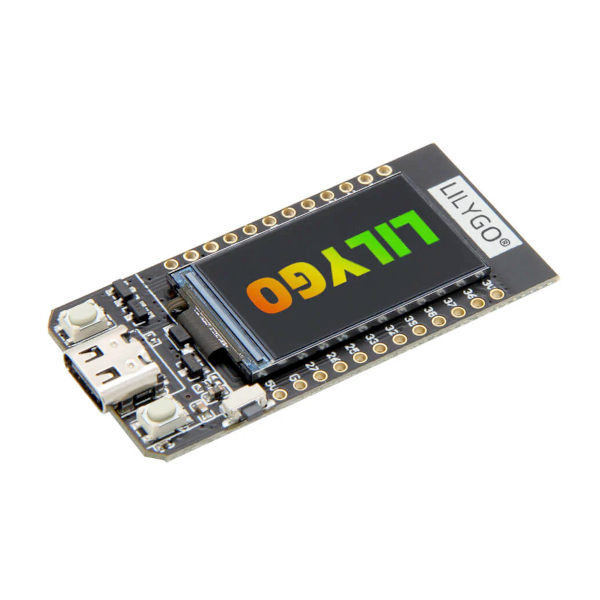
LilyGo TTGO T-Display 1.14 Inch LCD ESP32
LilyGo TTGO T-Display 1.14 Inch LCD ESP32 development board is based on esp32 microcontroller and uses xtensa...
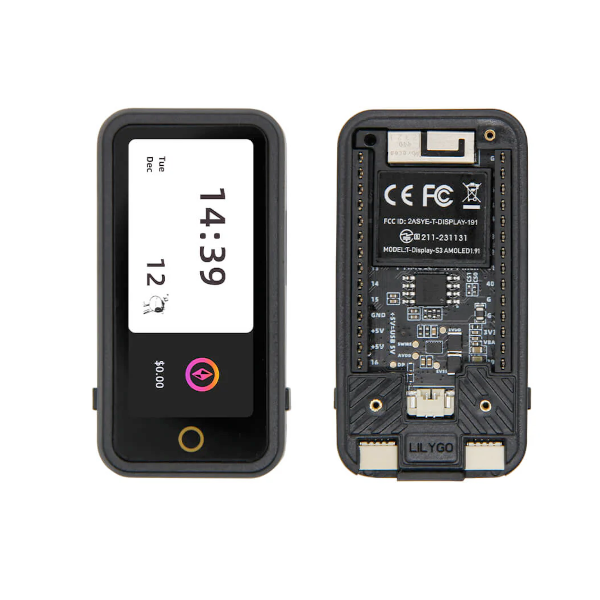
LilyGo T-Display-S3 AMOLED Touch
LilyGo T-Display-S3 AMOLED Touch development board is based on esp32s3 microcontroller and uses undefined...
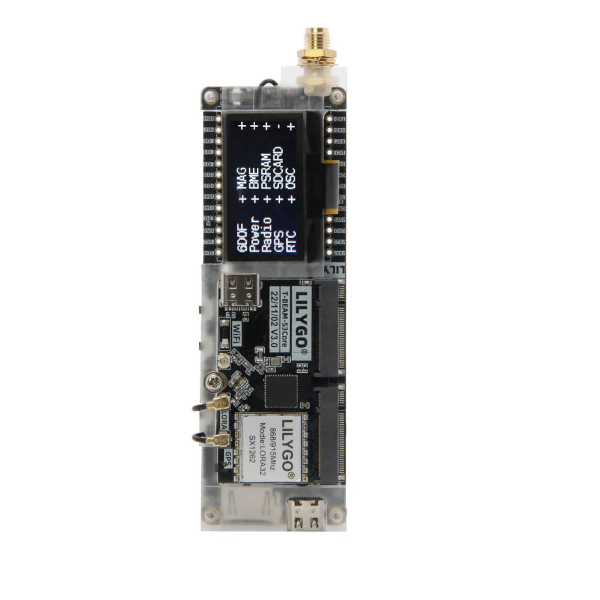
LilyGo T-Beam Supreme
LilyGo T-Beam Supreme development board is based on esp32s3 microcontroller and uses xtensa architecture.